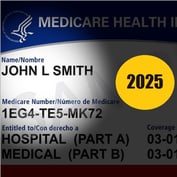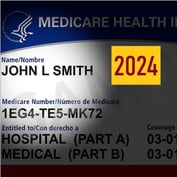What You Need to Know
- AHIP says member insurers mail out an average of about 34 million paper language services notices per year.
- Language services provisions are part of new draft health care and health insurance antidiscrimination regulations.
- Another part relates to gender dysphoria.
- Out2Enroll says that, in 2021, 46% of plans studied covered at least some gender dysphoria care.
Federal health regulators could soon create a universal language access symbol.
America’s Health Insurance Plans (AHIP), a group for health insurers, has argued that website users who have trouble with English need such a symbol to give them an easy-to-spot way to reach interpreter services, translated documents and other support services.
AHIP has asked the U.S. Department of Health and Human Services to develop, test and pilot use of the universal language access symbol. Because the symbol HHS developed would be the product of federal government work, it likely be free from copyright or trademark restriction.
What It Means
You may already have a stop sign in front of your house, and a magnifying glass icon on your website search form.
In a few years, your website could use a universal language access icon to show visitors where to click to get help in Spanish, Chinese or even sign language.
The Draft Regulations
Jeanette Thornton, an AHIP executive vice president, made the plea for a universal language access symbol in a letter commenting on the U.S. Department of Health and Human Services’ new draft nondiscrimination regulations.
HHS developed the draft regulations to reverse efforts by the administration of former President Donald Trump to narrow the scope of antidiscrimination regulations developed by the administration of another former president, Barack Obama.
The original regulations implemented Section 1557 of the Patient Protection and Affordable Care Act. PPACA is part of the two-act Affordable Care Act statutory package.
The Obama-era regulations applied Section 1557 to discrimination based on sexual orientation and gender identity and provided detailed instructions on how health care providers and health plans should serve people with limited ability to use English.
The Trump administration officials eliminated the provisions relating to gender identity and sexual orientation, arguing that those provisions exceeded the authority granted by the statute, and they replaced the detailed language support requirements with a requirement that a regulated entity “take reasonable steps to ensure meaningful access to its programs.”‘
The Tagline Problem
HHS now requires insurers to put tagline information for consumers about language services on websites and to include paper tagline notices with many letters sent to consumers.









 October 04, 2022 at 02:48 PM
October 04, 2022 at 02:48 PM







